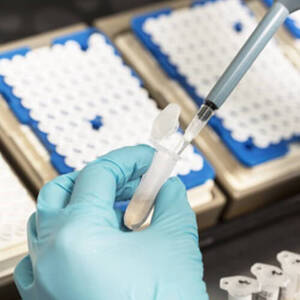Unlocking the Power of Peptides: Conjugation, Synthesis, Modification, and Analysis
الجسم
Peptides, short chains of amino acids linked by peptide bonds, are potent tools in biomedicine and biotechnology. Among their many applications, antimicrobial peptides (AMPs) have gained prominence for their potential to combat antibiotic-resistant bacteria.
Peptide Synthesis: The Foundation
Peptide synthesis is the cornerstone of peptide-based research and applications. The two primary methodologies used are solid-phase peptide synthesis (SPPS) and liquid-phase peptide synthesis (LPPS). SPPS, developed by R. B. Merrifield, has become the standard due to its efficiency and ability to automate the process.
The general approach involves sequentially adding amino acids to a growing peptide chain anchored to an insoluble resin. We use protective groups to ensure the formation of only the desired peptide bond, thereby enhancing the fidelity and yield of the synthesis. These peptides can then be cleaved from the resin and purified.
Peptide Conjugation: Enhancing Functionality
While peptides have intrinsic biological activities, their therapeutic and diagnostic potentials can be magnified through peptide conjugation. This process involves covalently linking peptides to other molecules, such as drugs, polymers, or nanoparticles, to enhance their functionality.
One common application is the development of peptide-drug conjugates (PDCs). Researchers can create highly targeted cancer treatments by conjugating a peptide known to bind specifically to a target cell type with a therapeutic agent. Similarly, peptides can be linked to imaging agents, creating powerful tools for diagnostic imaging.
Peptide Modification: Tailoring Properties
Peptide modification refers to the alteration of peptides to improve their stability, efficacy, or bioavailability. Modifying peptides can include the incorporation of non-natural amino acids, cyclization to enhance rigidity or the attachment of various chemical groups.
For AMPs, modifications can significantly enhance their stability against proteolytic degradation, a common challenge in developing peptide-based therapeutics. Cyclization, for instance, can lock peptides into a bioactive conformation, increasing their stability and potency.
Peptide Analysis: Ensuring Integrity and Function
To ensure that the synthesized and modified peptides perform as intended, rigorous peptide analysis is indispensable. Analytical techniques such as mass spectrometry (MS), high-performance liquid chromatography (HPLC), and nuclear magnetic resonance (NMR) spectroscopy are routinely employed.
HPLC is particularly useful for purifying peptides and assessing their purity, while MS provides accurate molecular weight data, confirming the peptide’s identity. NMR spectroscopy can offer detailed structural information, crucial for understanding and optimizing peptide activity.
Conclusion
Harnessing the potential of peptides in modern medicine and biotechnology requires a deep understanding and integration of peptide conjugation, synthesis, modification, and analysis. From the precision of peptide synthesis and the enhanced functionalities through conjugation to the tailored properties achieved by modifications and the assurances provided by detailed analysis, each step is vital. Advances in these areas continue to propel the field forward, offering new hope in the fight against diseases and the development of novel therapeutic and diagnostic tools.









تعليقات